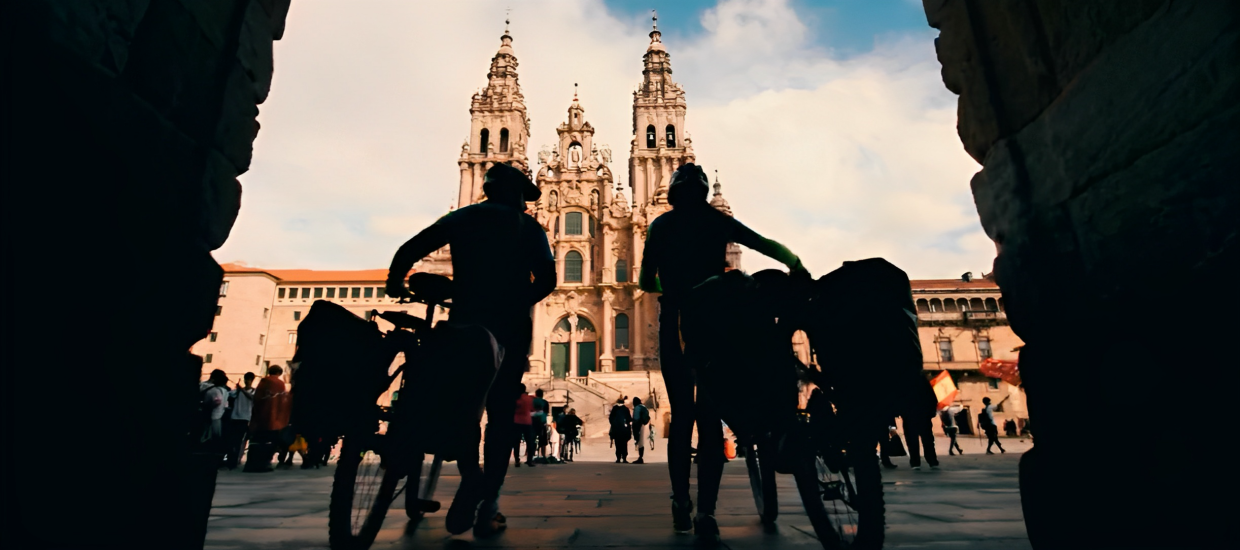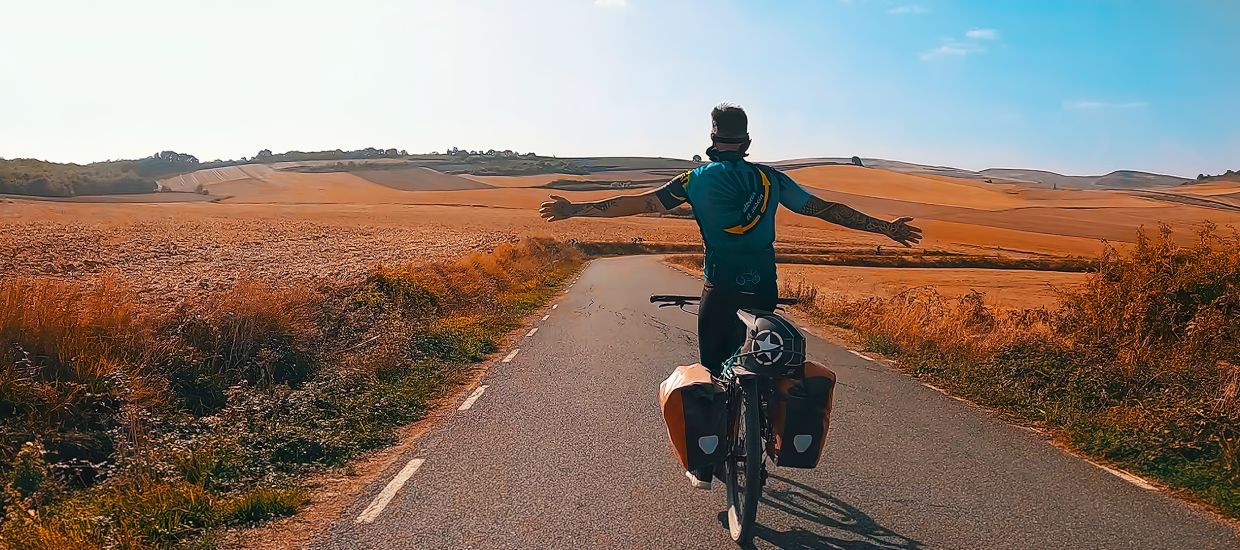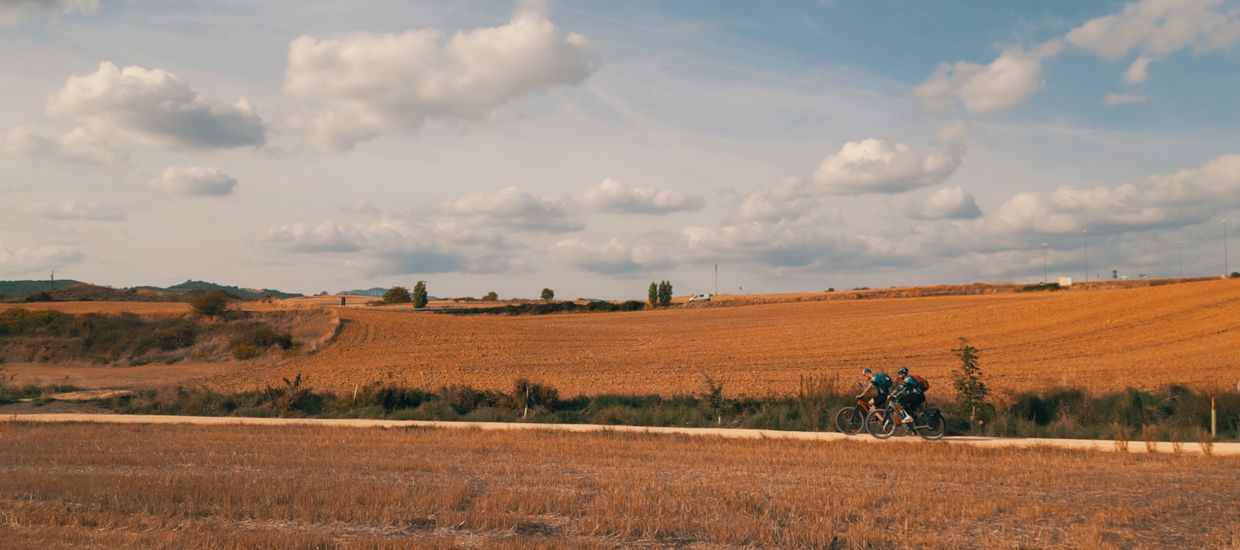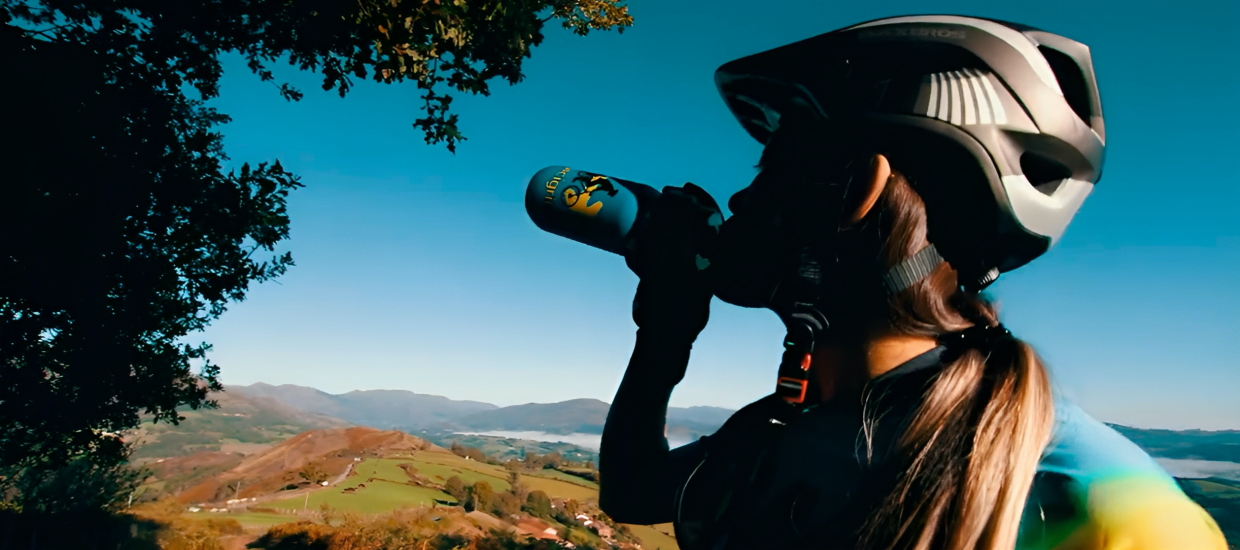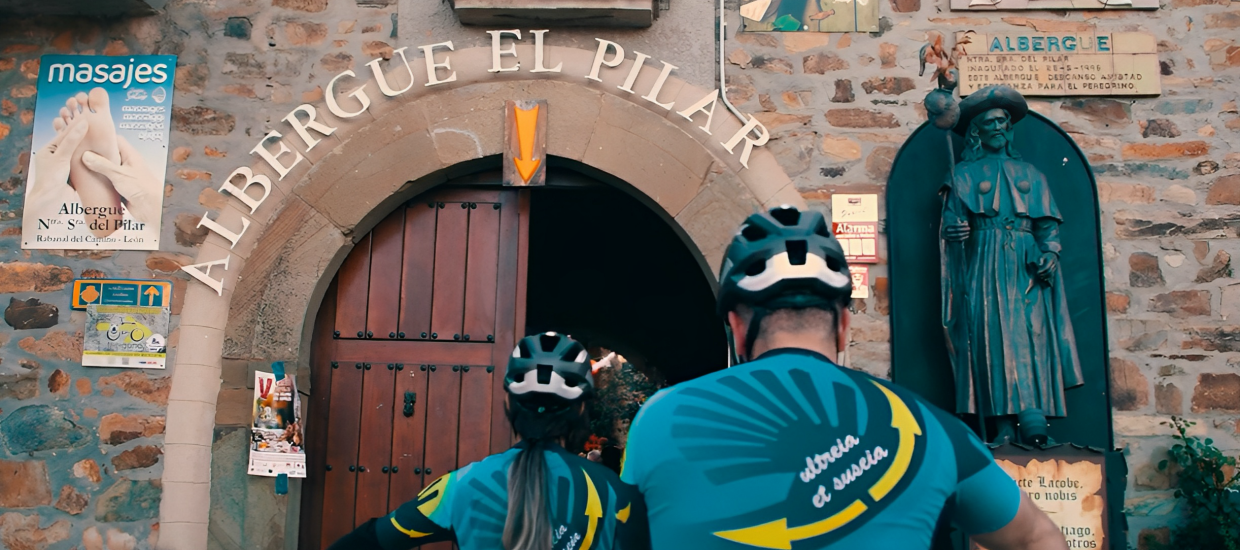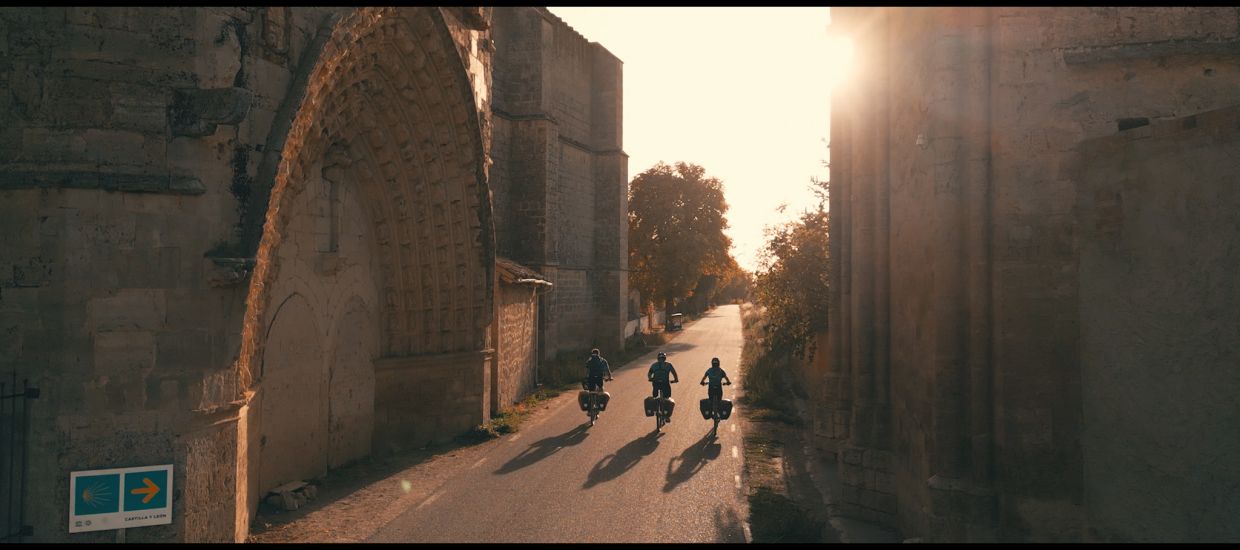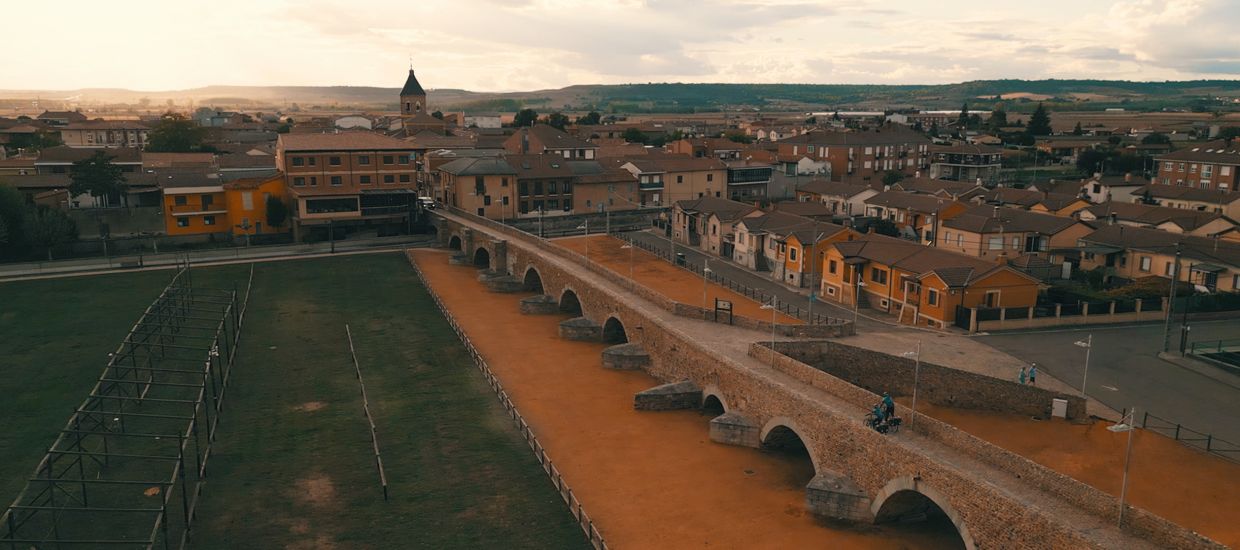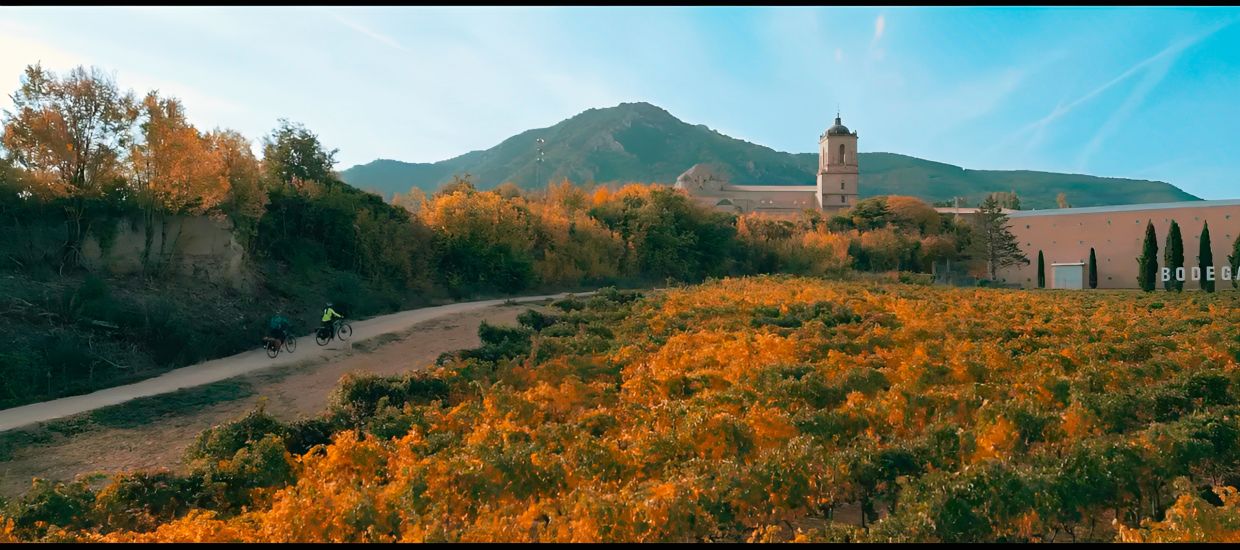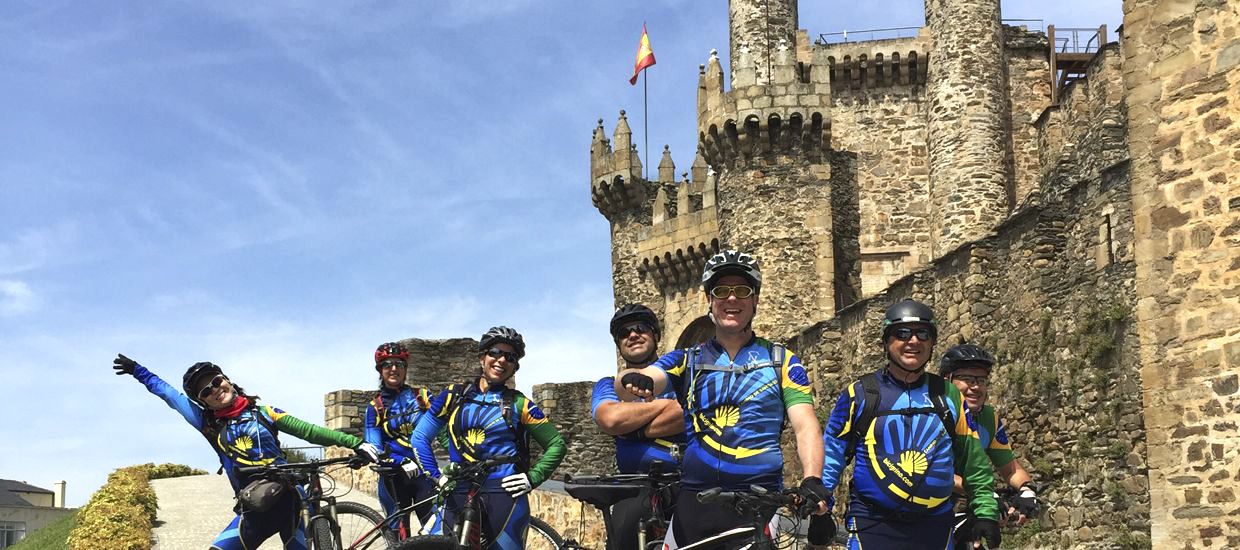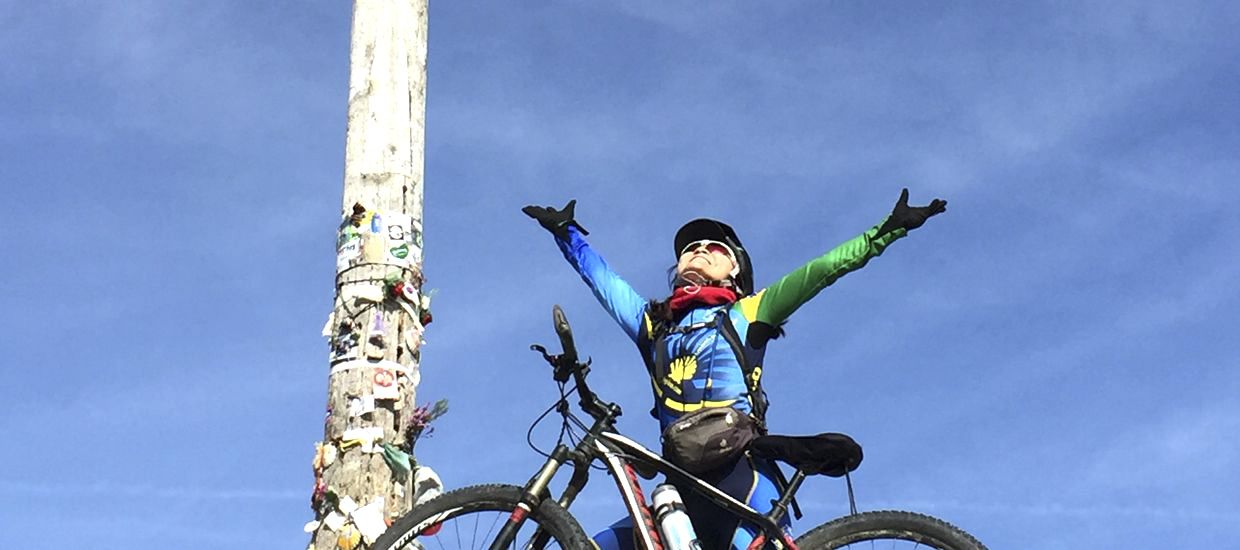Vía de la Plata in bike
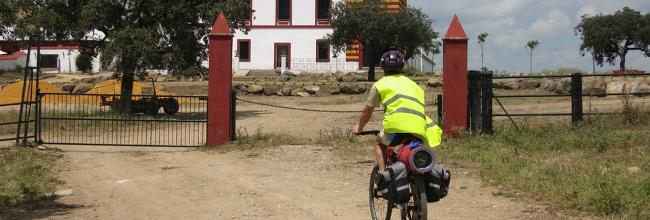
Nobody doubts that the Vía de la Plata is a Jacobean path, but it seems to the French path like an egg to a chestnut. The most notable difference is geographical and all the others derive from it.
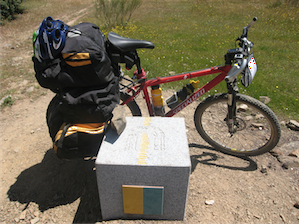
Thus, while the French or Northern routes, and even the Catalan route, reach Santiago without changing latitude, that is, without sudden changes in climatic conditions. The Vía de la Plata crosses the peninsula from south to north. The result is that, as one goes “up” to the north, the traveler observes and experiences a smooth but constant change in the landscape and, naturally, in the character of the people of the regions through which we pass.
Another characteristic of the Vía de la Plata is its signage. The entire path is indicated with the traditional yellow arrows, and with other orientation elements that change in each region, but they are not as abundant as on the French path and even in some sections their absence is noticeable. Bicigrinos have to be more attentive if possible, because on many occasions the arrows are located in places that are difficult to see from the top of a bicycle, especially when attention is focused on avoiding a stone or maintaining balance.
The difficult orientation, far from being an inconvenience, should be taken as another attraction, since it contributes to giving the Vía de la Plata a point of adventure that the popular French route does not have. This does not mean that the use of a GPS device is essential, although of course, carrying it can reassure you in some deserted sections.
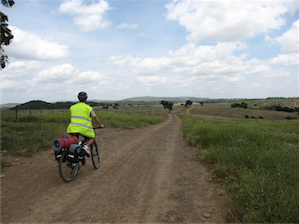
On the other hand, it must be added that many times the arrows follow an erratic and illogical course for a bicigrino. This is due to the fact that the promoters and caretakers of the road avoid marking the route on asphalt whenever possible. But sometimes for the bike rider the road can be a good escape valve. We are talking, for example, about the agricultural tracks of Tierra de Barros and Tierra de Campos that when they get wet they become real traps. In these cases the N-630 road is the best alternative. In fact, if you look at it from a bird’s eye view, the Vía de la Plata always runs close to it and in some sections along its shoulder. On the other hand, the vast majority of cars use the new A-66 dual carriageway, which follows a layout twin to that of the N-630, so traffic on the national highway is very low.
On the other hand, the construction of the highway is also having negative effects on the layout of the Vía de la Plata and in certain sections there are some other inconveniences to transit it. Apart from the undoubted impact on the landscape that it has caused in some places, the highway has affected, and will continue to affect it until the layout of the road is finished, which in some cases causes difficult situations.
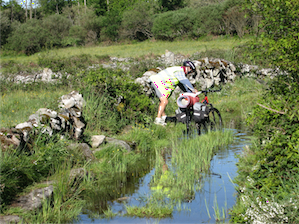
For all these reasons, in addition to the guide that each one chooses, it is interesting and advisable to carry a good road map. This will help us find alternatives to the original path when for some reason we have to deviate.
Practically the entire Vía de la Plata and its Sanabresa variant is cyclable. The most abundant routes are the dirt or gravel tracks, and the more or less comfortable lanes. There are also quite a few kilometers of trails. Those of “forced” asphalt are, on the other hand, few. The places where you have to get off the bike are anecdotal, and when there are uncyclable sections, there are asphalt alternatives that do not separate us much from the original route. However, these alternatives are not marked on the ground, so you have to carefully study the guide and always have a map at hand. Of course, the cyclability of the Vía de la Plata decreases a lot in case of rain, since the tracks get muddy until they become impassable.
Summarizing, the Vía de la Plata is an adventure with CAPITAL LETTERS and if you have “doctorate” before on the French way you will be able to verify for yourself that you are facing one of the most beautiful and spectacular cycling routes. For me, the Vía de la Plata has been for now, after doing 6 Caminos de Santiago along different routes, the most beautiful route I have ever done, but I do want to clarify that it can only be fully enjoyed if the Camino has been done before. French. Only in this way is the essence of the Jacobean known in advance, or only in this way can the Vía de la Plata be given the value it really has as a WAY TO SANTIAGO.
